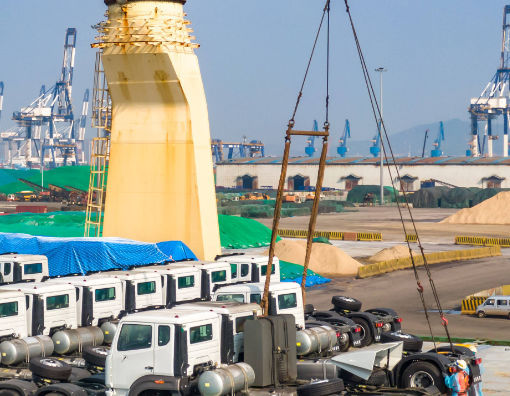A port is a place where ships dock to load and unload goods. There are a large number of goods that need to be loaded, unloaded, and transferred at the port every day. Some large cargo loading and unloading construction is difficult, so workers choose to use lifting belts to tie and fix the goods, accelerating the loading and unloading speed.
The advantages of lifting belts in the loading and unloading of large cargo in ports are obvious. Firstly, its material is usually made of high-strength synthetic fibers, which have extremely high strength and wear resistance, and can withstand the enormous weight of large goods. Whether it is steel components, large machinery equipment, or heavy goods such as containers, lifting belts can provide reliable binding and fixing capabilities. Secondly, the flexibility of the lifting belt allows it to be flexibly adjusted according to the shape and size of the goods, perfectly fitting the surface of the goods, thereby minimizing the shaking and displacement of the goods during the lifting process. This not only improves the safety of loading and unloading operations, but also effectively protects the surface of the goods from damage. Furthermore, the weight of the lifting belt is relatively light, making it easy for operators to carry and install, greatly improving work efficiency. Compared with traditional steel wire rope rigging, the use of lifting belts is more convenient and reduces the labor intensity of operators.

Although lifting belts have many advantages in the loading and unloading of large cargo in ports, they still face some challenges in practical applications. Firstly, the selection and use of lifting straps must strictly comply with relevant standards and specifications. Different types and specifications of lifting belts are suitable for different goods and operating environments, and operators must make the correct selection based on the actual situation. Otherwise, it may lead to safety accidents such as overloading and breakage of the lifting belt. Secondly, the lifting belt needs to be regularly inspected and maintained during use. Due to the harsh working environment in ports, lifting belts are easily affected by wear and corrosion. Therefore, it is necessary to regularly inspect them, promptly detect and replace damaged lifting belts to ensure their performance and safety. In addition, the professional skills and safety awareness of operators are also important factors affecting the effectiveness of the use of lifting belts. Port enterprises need to strengthen the training and management of operators, improve their professional skills and safety awareness, and ensure the correct use of lifting belts and safe loading and unloading operations.
The port chooses to use lifting belts to load and unload goods, which not only speeds up the loading and unloading of goods, but also ensures the safety of cargo loading and unloading, ensuring the normal transit operation of port goods.